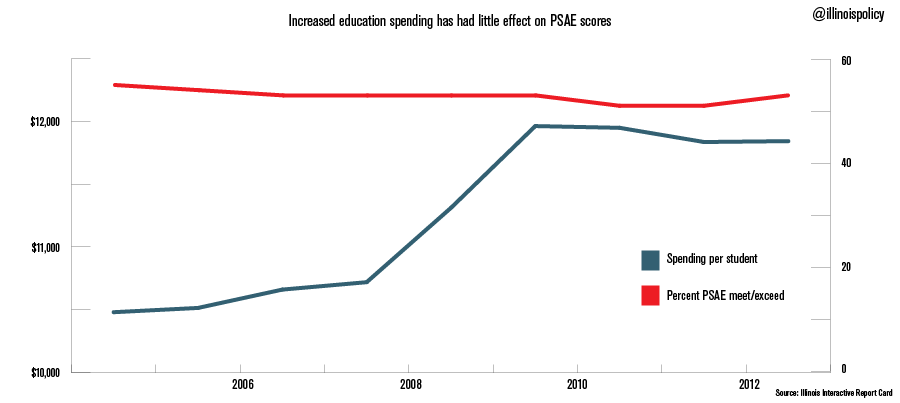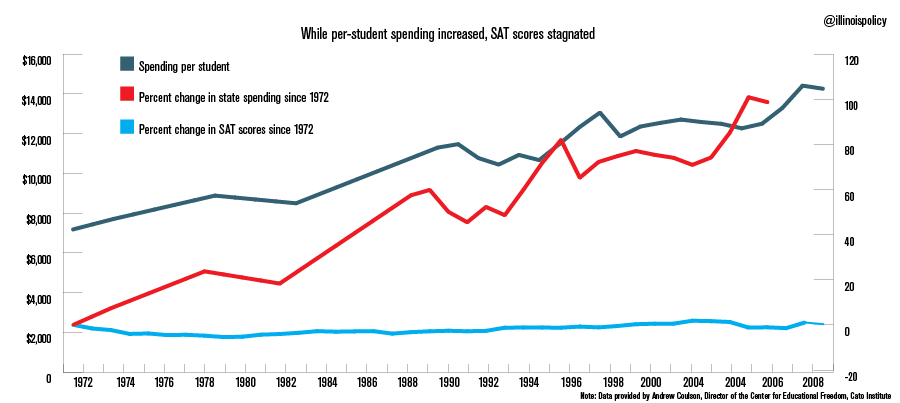More education spending does not equal better results
Madigan’s new tax proposal — which levies a 3 percent surcharge on income over $1 million to provide funding to schools — is packaged as an easy political sell. Who can argue with a pitch that cries: “More money for children!” But it’s not so simple. A look at the data about education spending and...
Madigan’s new tax proposal — which levies a 3 percent surcharge on income over $1 million to provide funding to schools — is packaged as an easy political sell.
Who can argue with a pitch that cries: “More money for children!”
But it’s not so simple. A look at the data about education spending and academic performance in Illinois shows that the relationship between the two is tenuous at best.
A recent report released by the Cato Institute shows that despite a 98 percent real increase in education spending since 1972, Illinois SAT scores have flat-lined.
The same holds true for student performance on the Prairie State Achievement Exam, or PSAE – a test taken by all Illinois 11th-graders.
Despite a 13 percent real increase in spending per student between 2005 and 2013, student performance has barely budged.

Study after study has shown that increased education funding is not correlated with increased outcomes. Simply spending more money on education doesn’t guarantee that academic achievement will improve.
It does guarantee, however, that millions of dollars will go toward an education system that has failed – for decades – to substantially improve student performance, especially in the state’s lowest-performing districts.
